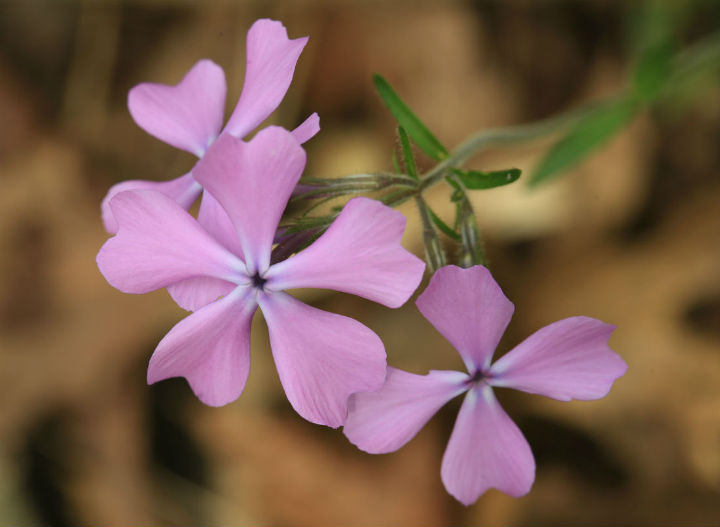The group hiking along the base of an impressive rock overhang.
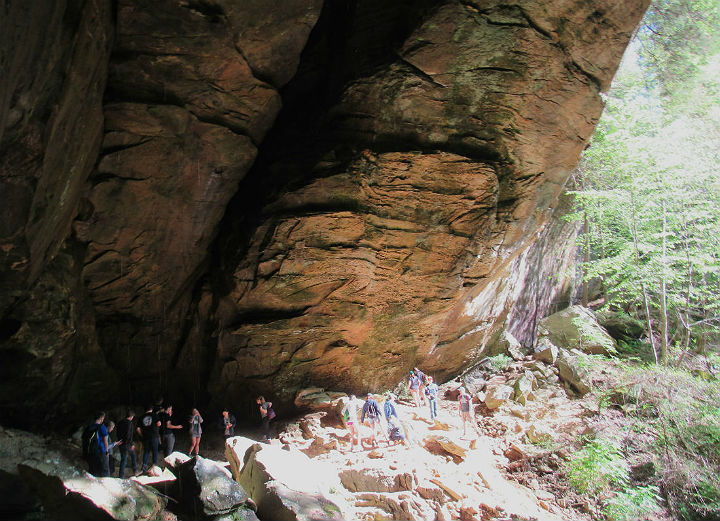
One of the two Eastern Garter Snakes found on the hike.
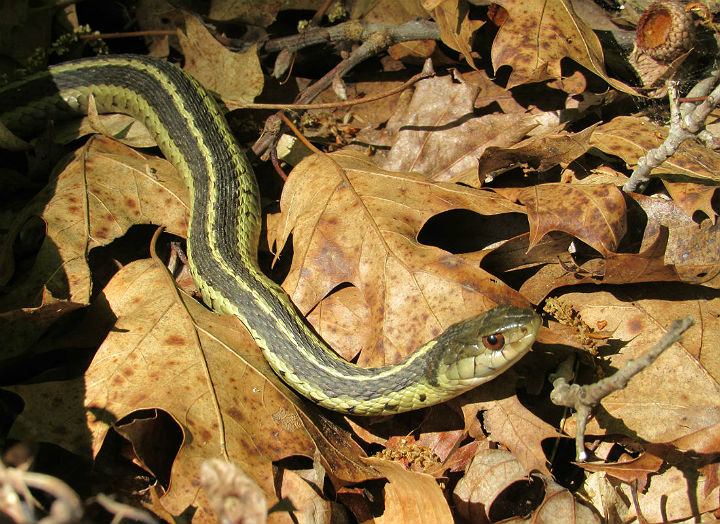
Kana spending some quality time with an Eastern Garter Snake.
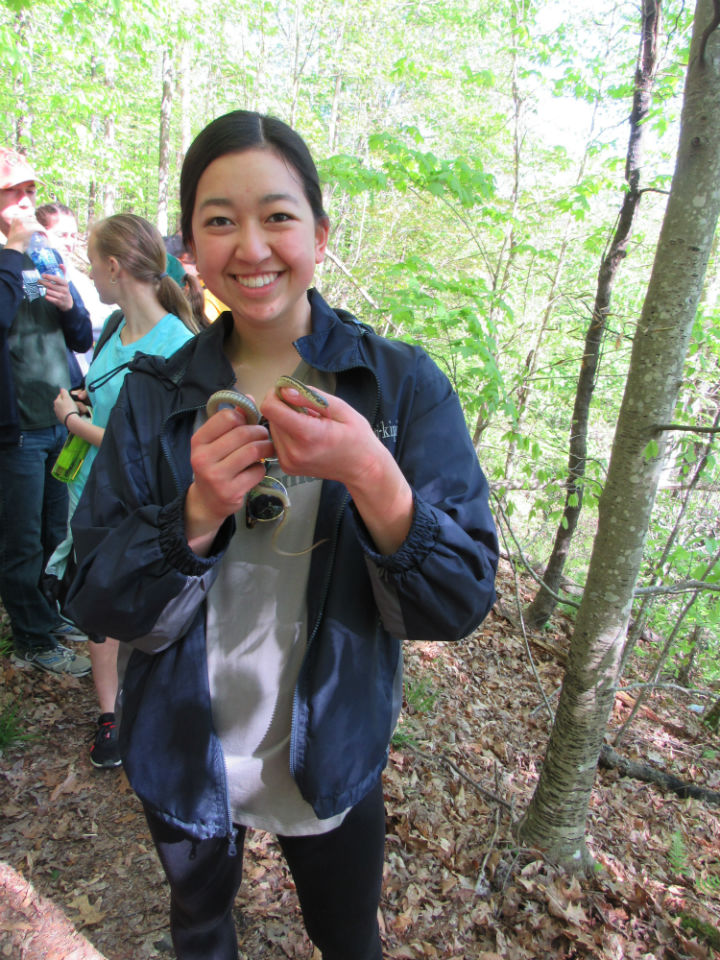
One of the two Black Racers found on the trip. These serpent speedsters are not known for their friendly disposition.
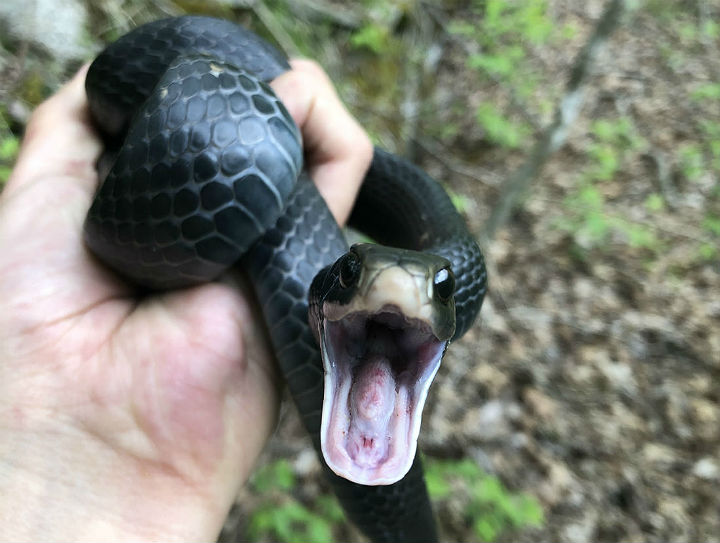
Wild Geranium - one of the most surprising aspects of the flower is the color of its pollen. Unlike most wildflowers with traditionally yellow or orange pollen, Wild Geranium's pollen is bright blue. This attracts a variety of insects which come to pollinate it.
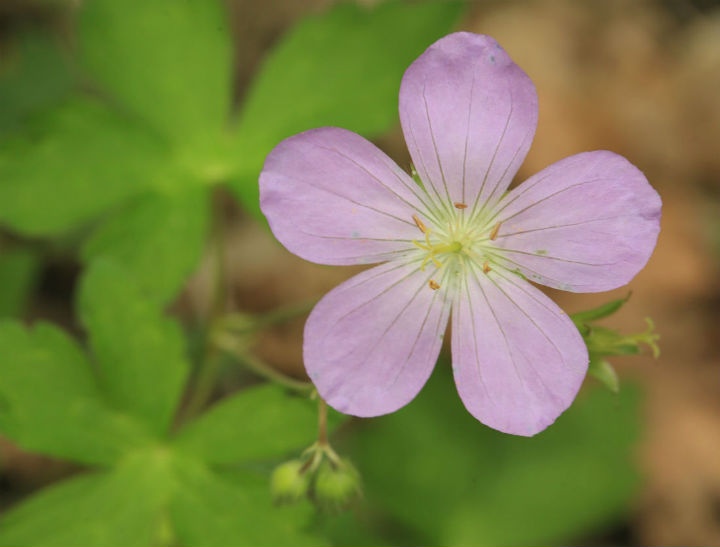
Several Worm Snakes were found. These reptiles are seldom seen, somewhat resemble earthworms and spend most of their time underground.
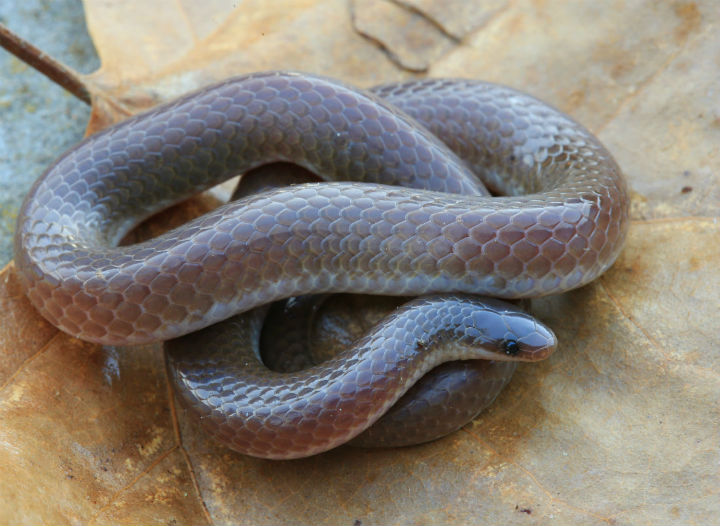
A Zebra Swallowtail hitching a ride on my backpack.
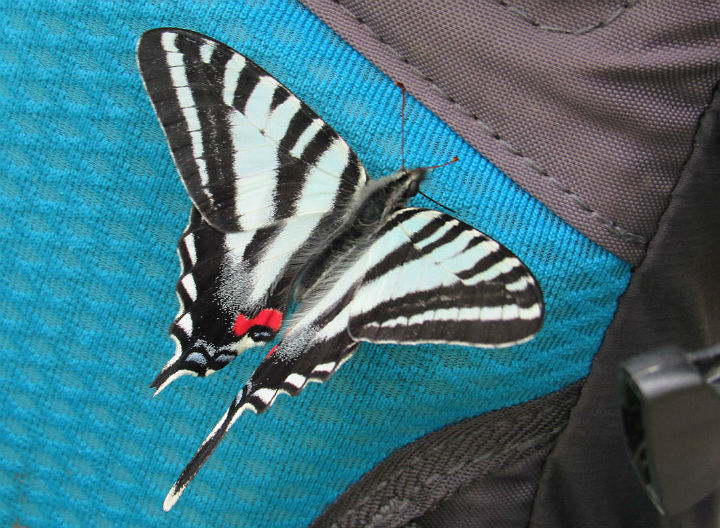
Ringneck Snakes don't get very large, averaging about a foot in length - this would be considered a sizeable one.
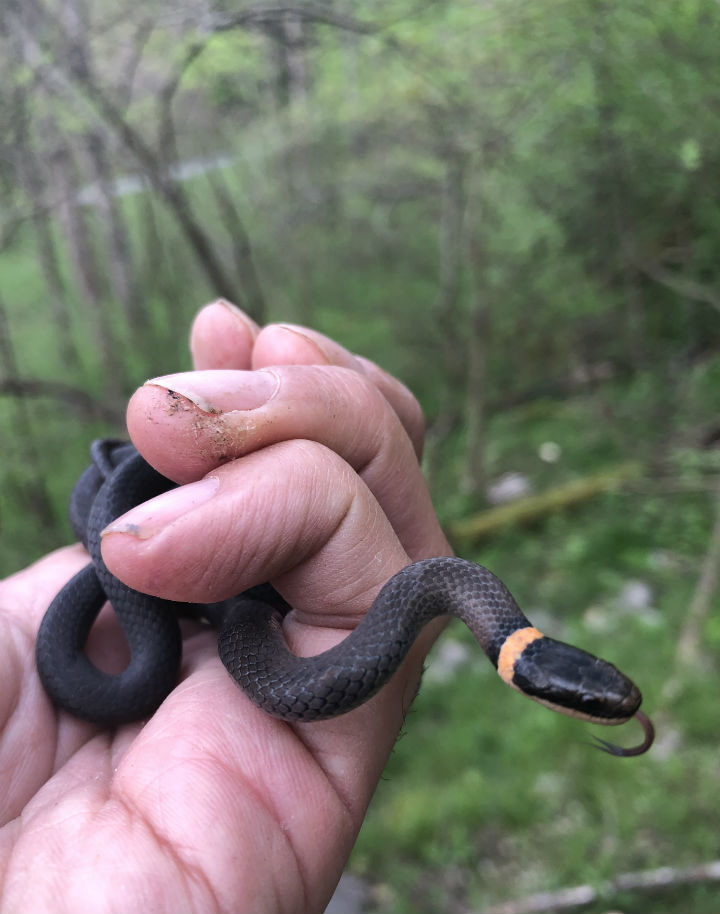
An American Toad in its domain.
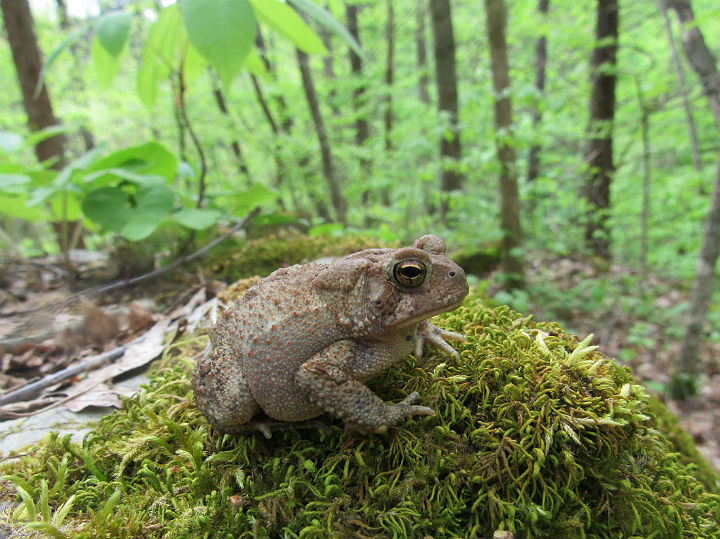
An "in situ" Redbelly Snake, this secretive serpent is rarely seen out in the open.
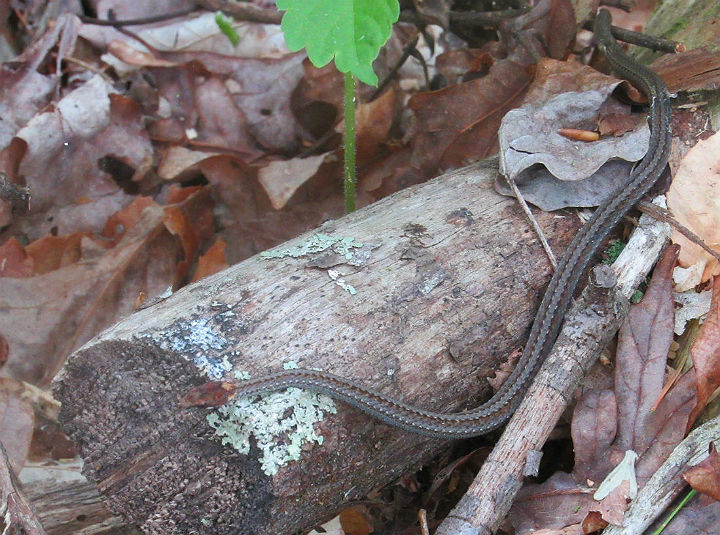
The same Redbelly Snake showing how it received its common name.
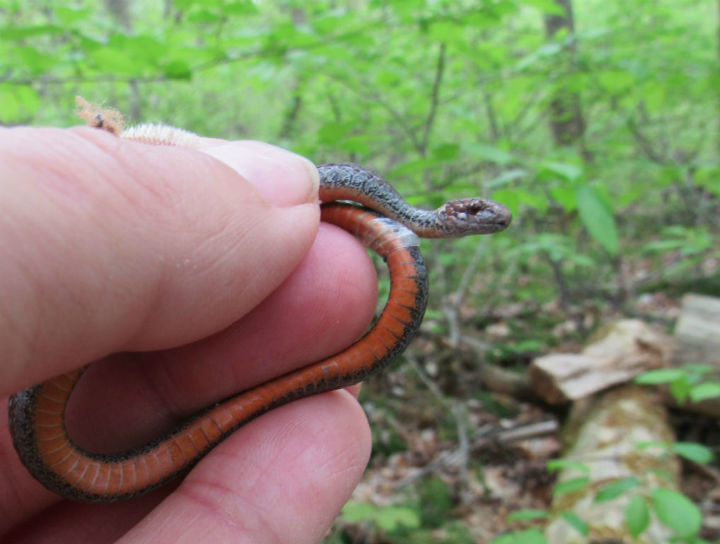
We hiked under this rock overhang with a tiny waterfall going over it.
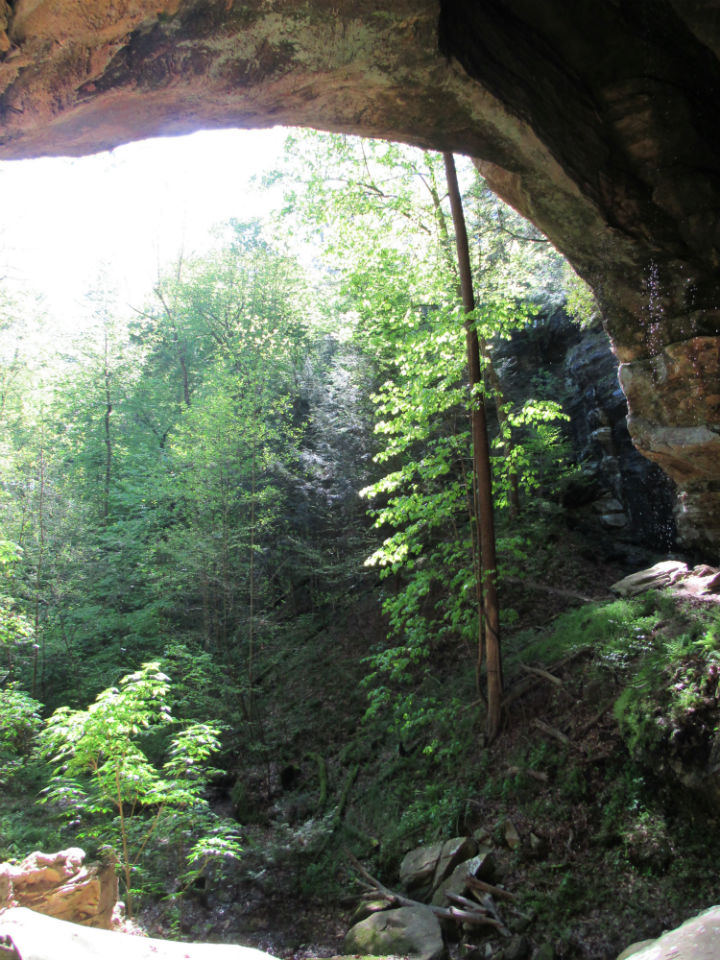
Ravine Salamanders reside in forests and are often found on the slopes of valleys and ravines where they live among the leaf litter, hiding under logs, stones or stumps.
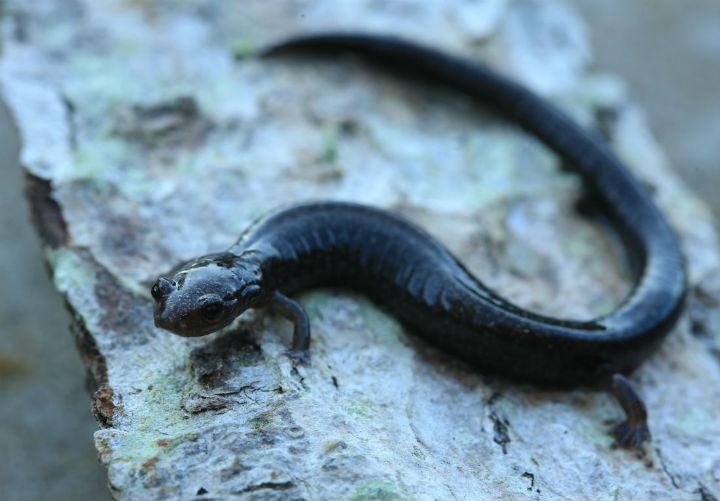
This Eastern Black Kingsnake was a welcome find. It is a powerful constrictor that eats a variety of different types of food, including snakes, lizards, rodents, birds and turtle eggs. They are resistant to the venom of pit-vipers and they readily eat copperheads, cottonmouths and rattlesnakes.
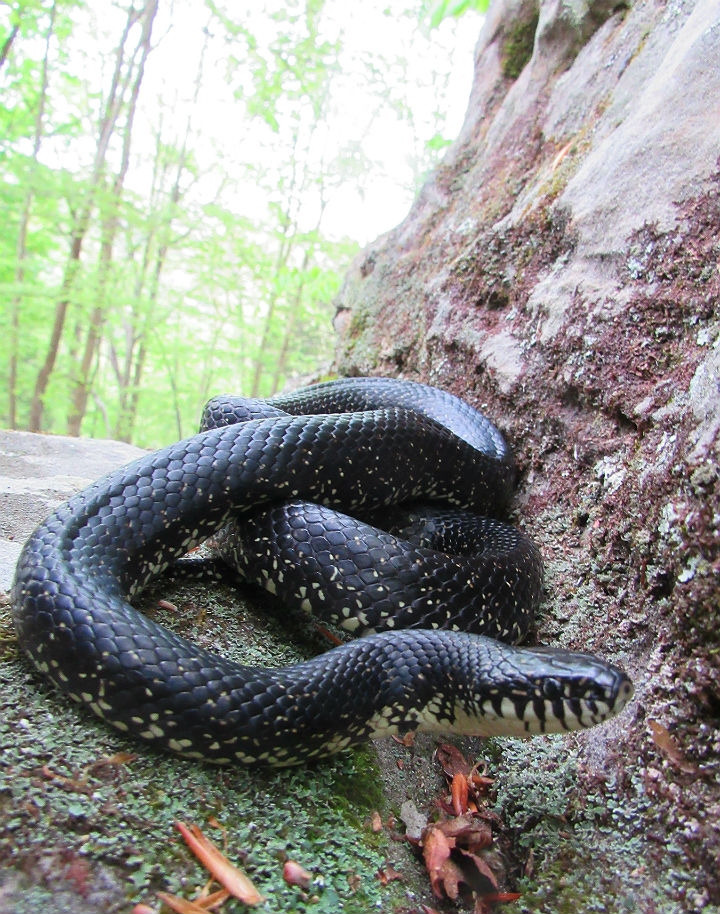
The pink version of Wild Blue Phlox.
